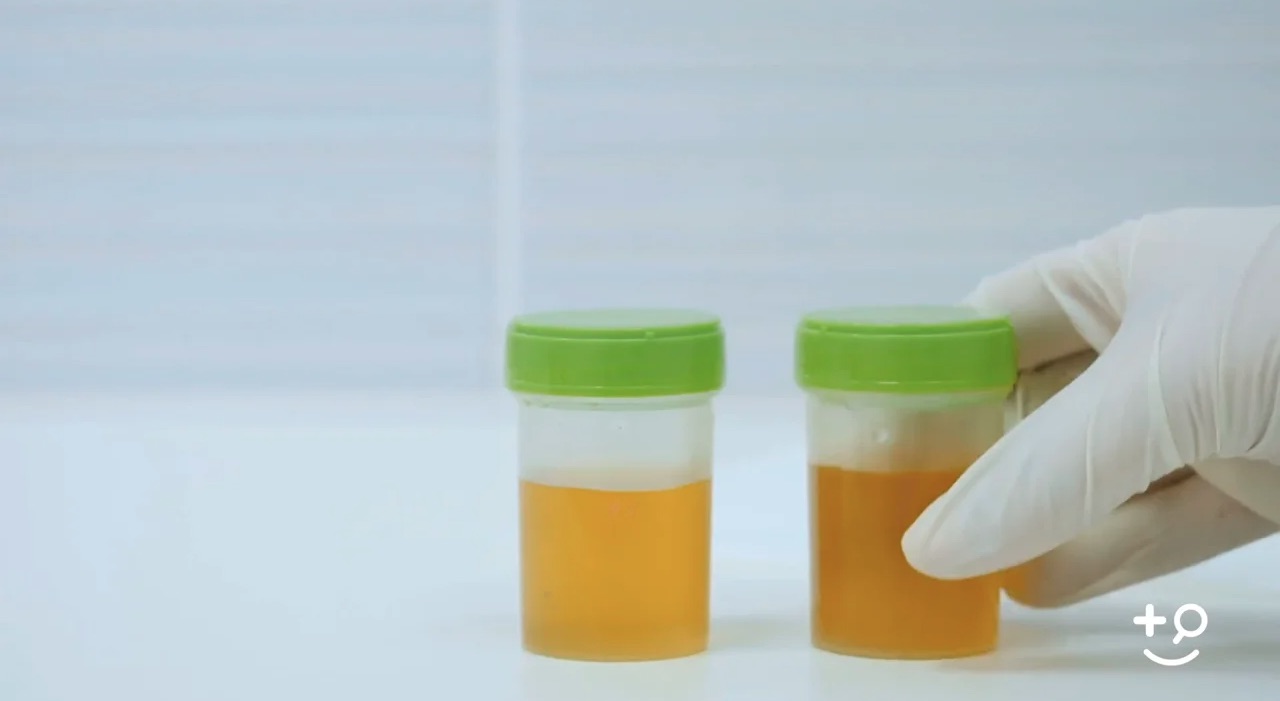Urology patients not uncommonly bring up the fact that their urine has bubbles or appears foamy. Today’s entry explains these phenomena and distinguishes what is normal from what is pathological.
Bubbly Urine
Bubbles are globules of one substance within another, commonly gases within liquids. Bubbles in the urine are entirely normal. Depending upon circumstances–volume of urine in the bladder, urinary concentration, and the urinary composition–one’s urine can range from having few, if any bubbles to being extremely bubbly. Bubbles are clear, spherical, variable in size, composed of a single layer, and flush readily. Many bubbles occur on the basis of the speed and force of urination that creates turbulence as urine strikes the toilet water — similar to when a waterfall strikes a river, creating whitewater or when tap water from a faucet is used to fill a pitcher, see image below. Check out a brief video on this phenomenon at “Physicists probe human ‘splashback’ problem.” In general, the more volume of urine in the bladder (up to a point), the greater the speed and force of urination in accordance with the Starling principle.
Bubble principle #1: When your bladder is really full and your urinary flow is forceful, there will be more bubbles.
Water has surface tension, a property of a liquid that allows it to resist external forces because of the cohesive nature of its molecules. Surface tension occurs since water molecules attract other water molecules in its vicinity, but at the surface the outermost layer of water molecules has fewer molecules to cling to since there is air above. This results in a compensatory stronger bond with neighboring water molecules that creates a barrier that behaves like an elastic membrane between atmosphere and water.
Bubble principle #2: Surface tension on the surface of the toilet water creates an “elastic membrane” that allow for the formation of bubbles that float on the surface.
As the urinary stream descends and spirals from bladder to toilet, some atmospheric air becomes trapped and incorporated, leading to the formation of air bubbles. These air bubble break through the “elastic membrane” on the surface of the toilet water and float to the surface due to their buoyancy. Many of these bubbles are short lived and rapidly dissipate by bursting.
Urine has a variety of organic and inorganic constituents, including urea, uric acid, ammonia, creatinine, chloride, phosphates, sulphates, calcium and other metabolites of foods and medications. In general, the more concentrated these constituents are, the greater the tendency for bubble formation. Sulphates functions as surfactants, compounds that are able to both attract and repel water (like soap). The outside and inside surfaces of bubbles consist of surfactants, with a thin layer of water between the two layers of surfactant, analogous to a water sandwich with surfactant as bread. Air is trapped within. Bubbles assume a spherical shape since a sphere has the smallest surface/volume ratio.
Bubble principle #3: Certain urinary constituents function as surfactants that form the inside and outside surfaces of urinary bubbles. The more concentrated the urine (darker amber), the greater the concentration of surfactants and the greater the tendency to bubble.
Simple experiment for those who stand to pee: Aim your stream at the porcelain of the toilet bowl, near the toilet water, but not in the water. The bubble content that results will be minimal, a fraction of what would appear if you aimed in the toilet water, showing that the bubbling phenomenon has everything to do with displaced air that is trapped and incorporated within a thin film of surfactant/water sandwich. This is not much different than carefully pouring a beer into a glass that is tilted so that the stream of beer strikes the side of the glass and not the beer itself, resulted in much less “head” of beer.
In summary, the force of urination displaces air into the toilet water and surfactants within the urine, water and air combine into bubbles that float on the surface with the help of surface tension. All normal.
Foamy Urine
On the other hand, foam in the urine is an abnormal finding. As distinguished from bubbles, foamy urine is white and consists of multiple layers of bubbles that tend to linger in the toilet after flushing. Foam, like bubbles, forms when pockets of gas are trapped in a liquid with the aid of a surfactant. Proteins present in the urine function as surfactants that promote the formation of foam in the urine. Thus, foamy urine can be a manifestation of protein in the urine (proteinuria), which can be considered as a warning sign of kidney disease. Under normal circumstances, protein is not present in the urine as the kidney filtration system returns protein back into the circulation.
Not everyone with foamy urine has protein in their urine. Only about one-third of patients with foamy urine are found to have proteinuria and many cases defy explanation, although the current thinking is that metabolites present in the urine, particularly in the presence of concentrated urine can explain some cases of foamy urine.
A simple screening test for proteinuria can be obtained by a urinary dipstick test and if positive for protein, a more sophisticated, quantitative test can be obtained by collecting urine for 24 hours and assessing the protein content. If proteinuria is confirmed, referral to a medical doctor specializing in kidney disease–a nephrologist–is in order.
Foamy urine is not unlike sea foam, often primarily composed of protein from algae, plankton, etc. The foamy “head” on the top of a stein full of beer is protein derived from barley.
Bottom Line: Bubbles in the urine are normal and quite variable depending on many factors. To those who stand to pee, enjoy the spectacle! On the other hand, foamy urine may be indicative of protein in the urine and underlying kidney disease, so if it is persistent please consider getting it evaluated.
 Back to Blog Homepage
Back to Blog Homepage
